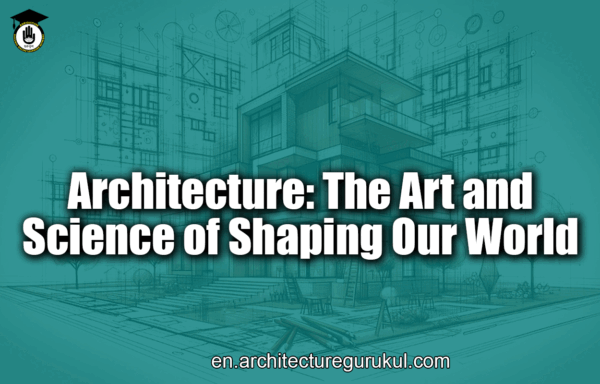Architecture: The Art and Science of Shaping Our World.Architecture, often described as both an art and a science, plays a pivotal role in shaping the physical and cultural landscapes of our world. From ancient monuments to modern skyscrapers, architecture reflects the technological advancements, cultural values, and social structures of societies throughout history. It is a discipline that goes beyond mere construction, encompassing the creative and practical aspects of designing spaces that meet human needs and aspirations.
Table of Contents
Architecture: The Art and Science of Shaping Our World
Historical Evolution of Architecture
The history of architecture is a testament to human ingenuity and creativity. It begins with rudimentary shelters and evolves into sophisticated structures that define civilizations. Ancient architecture, such as the pyramids of Egypt and the Parthenon in Greece, showcases early engineering marvels and aesthetic principles that continue to influence contemporary design.
The Roman Empire introduced innovations like the arch, vault, and concrete, enabling the construction of enduring structures like the Colosseum and aqueducts. In the medieval period, Gothic architecture emerged with its pointed arches, ribbed vaults, and flying buttresses, leading to the creation of awe-inspiring cathedrals like Notre-Dame de Paris.
The Renaissance brought a revival of classical principles, emphasizing symmetry, proportion, and geometry. Architects like Filippo Brunelleschi and Leon Battista Alberti drew inspiration from ancient Roman architecture, culminating in masterpieces like the Florence Cathedral and St. Peter’s Basilica.
The 20th century witnessed a radical transformation in architecture with the advent of modernism. Pioneers like Le Corbusier, Ludwig Mies van der Rohe, and Frank Lloyd Wright embraced new materials and construction techniques, promoting functionalism and simplicity. Their work laid the foundation for contemporary architecture, characterized by innovative forms, sustainable design, and a focus on human-centric spaces.

Principles of Architecture
Architecture is governed by several key principles that guide the design process:
1. Functionality: A building must serve its intended purpose efficiently. This principle emphasizes the importance of usability and practicality in design, ensuring that spaces meet the needs of their occupants.
2. Aesthetics: Architecture is also an art form, and aesthetic considerations are crucial. The visual appeal of a building, its harmony with the surrounding environment, and the use of materials and colors contribute to its overall beauty.
3. Sustainability: In response to environmental challenges, sustainable architecture has become increasingly important. This involves designing buildings that minimize energy consumption, reduce waste, and utilize renewable resources.
4. Contextuality: Buildings should respect their context, harmonizing with their surroundings and cultural heritage. Contextual design considers the geographical, historical, and social aspects of the environment.
5. Innovation: Architects continually push the boundaries of what is possible, experimenting with new materials, technologies, and forms to create unique and forward-thinking designs.
Architecture in the Contemporary World
Today, architecture faces the challenge of addressing the needs of a rapidly changing world. Urbanization, population growth, and environmental concerns drive the demand for innovative solutions in housing, infrastructure, and public spaces. Architects are at the forefront of creating smart cities, designing energy-efficient buildings, and reimagining urban landscapes to promote sustainability and improve quality of life.
Advancements in technology, such as Building Information Modeling (BIM), 3D printing, and parametric design, have revolutionized the architectural process. These tools enable architects to visualize complex structures, optimize designs, and enhance collaboration across disciplines.

The Cultural Impact of Architecture
Architecture profoundly influences cultural identity and social interaction. Iconic structures like the Eiffel Tower, Sydney Opera House, and Burj Khalifa become symbols of their cities, attracting visitors from around the world. Public spaces, such as parks, plazas, and museums, foster community engagement and cultural exchange.
In conclusion, architecture is a dynamic and multifaceted discipline that shapes our physical environment and reflects our collective values and aspirations. Through the interplay of functionality, aesthetics, sustainability, and innovation, architects create spaces that inspire, uplift, and sustain human life. As we navigate the complexities of the modern world, the role of architecture remains as vital as ever in crafting a future that is both beautiful and sustainable.
